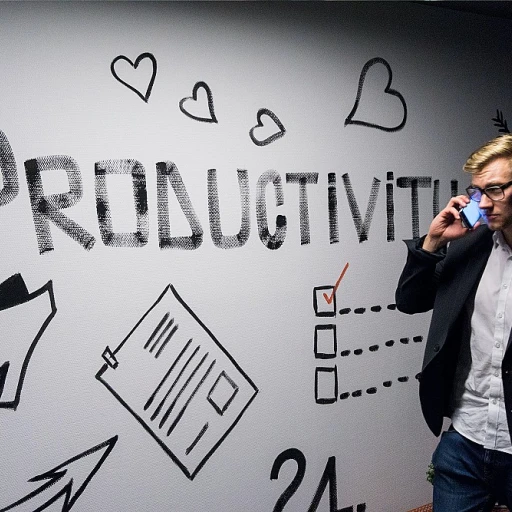
Understanding horizontal communication in the HR context
What Makes Horizontal Communication Essential in Today’s Workplace?
In modern organizations, effective horizontal communication is more than just a buzzword. It refers to the open flow of information between employees or teams at the same level within the organizational hierarchy. Unlike vertical communication, which moves up and down between managers and subordinates, horizontal communication—also called lateral communication—focuses on collaboration, problem solving, and decision making among peers.
Horizontal communication channels play a crucial role in breaking down silos between departments. When team members from different areas of the business share feedback, ideas, and updates, it helps create a more connected and agile work environment. This type of communication supports cross functional projects, encourages open communication, and fosters a culture where employees feel empowered to contribute.
- Collaboration: Teams can work together more efficiently, sharing knowledge and resources.
- Problem Solving: Employees can address challenges quickly by leveraging diverse perspectives.
- Feedback Sharing: Open communication flows allow for real time feedback and continuous improvement.
- Decision Making: Involving multiple team members leads to more informed and balanced decisions.
For human resources professionals, understanding the dynamics of horizontal communication is vital. It helps HR teams design better internal communication strategies, improve the work environment, and support organizational communication goals. By focusing on effective horizontal communication, companies can create a workplace where information flows freely, employees feel valued, and teams are better equipped to achieve business objectives.
If you’re interested in learning how AI can further enhance these communication flows and support talent development, you can explore more in this resource on enhancing talent with AI in human resources.
The role of artificial intelligence in enabling better communication
How AI Transforms Internal Communication Flows
Artificial intelligence is rapidly changing the way organizations manage internal communication, especially across teams and departments. In the context of horizontal communication, AI tools can help break down traditional barriers, making it easier for employees to share information, collaborate, and solve problems together. This shift is crucial for companies aiming to foster a more open and effective work environment, where communication flows are not limited by organizational hierarchy.
AI-Powered Tools for Lateral Collaboration
AI-driven platforms can automate routine communication tasks, analyze patterns in team interactions, and suggest optimal communication channels. For example, chatbots and virtual assistants can answer common HR questions, freeing up time for team members to focus on more complex issues. Natural language processing (NLP) tools can help identify gaps in communication flows, ensuring that important messages reach the right employees at the right time. These technologies support effective horizontal communication by making information sharing more seamless and accessible across the organization.
- AI can recommend the best time for cross-functional meetings, improving collaboration between departments.
- Automated feedback systems encourage open communication and continuous improvement among teams.
- Data-driven insights from AI help HR teams monitor the effectiveness of internal communication strategies.
Supporting a Culture of Open Communication
By integrating AI into internal communication channels, organizations can promote a culture where feedback and ideas flow freely between team members, regardless of their position in the company. This approach not only enhances problem solving and decision making but also supports a more inclusive and dynamic workplace. For more on how technology is shaping new opportunities in the workplace, see this resource on exploring opportunities in remote nonprofit careers.
Benefits of AI-driven horizontal communication for HR teams
Unlocking Collaboration and Efficiency Across Teams
AI-driven horizontal communication is transforming how employees interact across departments and teams. By automating routine communication flows and making information sharing seamless, artificial intelligence helps organizations break down traditional silos. This shift supports a more open communication environment, where feedback and ideas can move laterally, not just vertically through the organizational hierarchy.
- Improved collaboration: AI tools facilitate real-time sharing of insights and documents, making it easier for team members to work together on cross functional projects. This enhances problem solving and decision making by ensuring everyone has access to the same information at the same time.
- Faster information flow: Automated chatbots and smart communication channels help employees get quick answers to their questions, reducing delays and improving the overall speed of internal communication.
- Enhanced feedback mechanisms: AI can analyze communication patterns and highlight areas where feedback is lacking, encouraging a culture of open communication and continuous improvement.
- Consistency across the organization: By standardizing communication channels, AI ensures that messages are clear and consistent, regardless of department or team. This helps maintain effective communication and reduces misunderstandings.
- Time savings: Automating repetitive communication tasks allows HR teams and employees to focus on more strategic work, improving productivity and job satisfaction.
For organizations looking to enhance their workplace dynamics, leveraging AI for effective horizontal communication can lead to a more connected, agile, and innovative business environment. To explore how clear management solutions are transforming human resources with artificial intelligence, check out this in-depth resource on AI-driven HR management.
Challenges and limitations of implementing AI in horizontal communication
Barriers to Seamless AI Integration in Communication Flows
While artificial intelligence offers significant promise for improving horizontal communication across teams and departments, organizations often encounter several challenges when adopting these technologies. Understanding these obstacles is crucial for fostering effective communication and collaboration in the workplace.
- Data Privacy and Security Concerns: AI-driven tools often rely on analyzing large volumes of internal communication data. This raises concerns about employee privacy, data protection, and compliance with regulations. Ensuring secure communication channels and transparent data usage policies is essential to maintain trust among team members.
- Integration with Existing Systems: Many companies already use a variety of communication platforms. Integrating AI solutions with current communication flows and organizational hierarchies can be complex, leading to disruptions or inefficiencies if not managed carefully.
- Resistance to Change: Employees and teams may be hesitant to adopt new AI-driven communication tools, especially if they perceive them as intrusive or difficult to use. This resistance can hinder the development of open communication and effective horizontal collaboration.
- Quality of AI Insights: The effectiveness of AI in supporting lateral communication depends on the quality and relevance of the insights it provides. Inaccurate or irrelevant feedback can negatively impact decision making and problem solving within cross functional teams.
- Bias and Fairness: AI algorithms can unintentionally reinforce existing biases in organizational communication, affecting the flow of information and feedback among employees. Regular monitoring and adjustment are necessary to ensure fairness and inclusivity in communication workplace practices.
Balancing Automation with Human Touch
Another limitation is the risk of over-automation. While AI can help streamline internal communication and facilitate sharing of information, it cannot fully replace the nuances of human interaction. Effective horizontal communication relies on empathy, context, and trust—qualities that technology alone cannot provide. Organizations must strike a balance between leveraging AI for efficiency and maintaining authentic, open communication among team members.
Resource and Skill Gaps
Implementing AI-driven solutions for organizational communication requires investment in both technology and training. Not all businesses have the resources or expertise to deploy and maintain advanced AI systems. This can create disparities in how different departments or teams benefit from improved communication channels and organizational communication strategies.
By addressing these challenges, companies can unlock the full potential of AI to support effective horizontal communication, enhance collaboration, and create a more dynamic work environment.
Practical examples of AI supporting horizontal communication in HR
AI-Powered Tools Transforming Team Collaboration
In today’s workplace, artificial intelligence is reshaping how employees connect and share information across departments. By automating routine communication flows and supporting real-time feedback, AI-driven platforms help teams break down organizational hierarchy barriers. For example, chatbots and virtual assistants can answer HR-related questions instantly, making internal communication more efficient and accessible to all team members. This type of communication encourages open communication and fosters a more collaborative work environment.
Streamlining Cross-Functional Projects
AI solutions are particularly effective in supporting cross-functional teams. When employees from different business units need to collaborate, AI can recommend relevant colleagues, schedule meetings, and even summarize discussions. This helps maintain a steady flow of information, which is essential for effective horizontal communication. By making it easier to share updates and insights, AI tools support problem solving and decision making across the organization.
Enhancing Feedback and Knowledge Sharing
Feedback is a cornerstone of effective communication workplace practices. AI-driven platforms can analyze employee feedback, identify trends, and suggest actionable improvements. These insights help HR teams create targeted initiatives that improve the work environment and strengthen organizational communication. Additionally, AI can curate and distribute knowledge resources, ensuring that valuable information reaches the right employees at the right time.
Real-World Applications in Organizational Communication
- Automated Surveys: AI-powered surveys collect feedback from employees across departments, providing HR with a clear view of organizational needs.
- Smart Scheduling: AI tools coordinate meetings for teams working in different time zones, reducing delays and supporting effective horizontal communication.
- Internal Social Platforms: AI enhances internal communication channels by recommending relevant content and connecting employees with similar interests or expertise.
- Document Management: AI systems organize and tag documents, making it easier for team members to find and share information across the company.
These practical examples show how AI can help organizations move beyond traditional vertical communication models. By supporting lateral communication and improving the flow of information, AI enables more agile and responsive teams, ultimately driving better business outcomes.
Best practices for integrating AI into horizontal communication strategies
Building a Foundation for AI-Enhanced Communication
To successfully integrate artificial intelligence into horizontal communication strategies, organizations need a clear roadmap. The goal is to create an environment where employees, teams, and departments can collaborate more effectively, share feedback openly, and streamline the flow of information across the organizational hierarchy. Here are some best practices to help your company foster effective horizontal communication with AI:
- Assess Current Communication Channels: Start by evaluating existing internal communication flows. Identify gaps in horizontal and lateral communication between team members and departments. This helps pinpoint where AI tools can add the most value.
- Choose the Right AI Solutions: Select AI-driven platforms that align with your business needs. Look for tools that support real-time messaging, automated feedback collection, and cross-functional collaboration. The right technology can enhance both horizontal and vertical communication, making information sharing more seamless.
- Promote Open Communication Culture: Encourage employees to use new AI-powered communication channels. Training and clear guidelines help teams feel comfortable with these tools, leading to more effective communication and a healthier work environment.
- Integrate with Existing Systems: Ensure that AI solutions work smoothly with your current HR and organizational communication systems. Integration reduces friction, saves time, and supports a unified communication workplace.
- Monitor and Measure Impact: Regularly track how AI is influencing communication flows, problem solving, and decision making. Use analytics to understand the effectiveness of your strategies and make adjustments as needed.
- Maintain Human Oversight: While AI can automate many aspects of internal communication, human judgment remains essential. Encourage team leaders to oversee AI-driven processes and provide guidance when necessary.
Encouraging Collaboration and Feedback
Effective horizontal communication thrives on collaboration and open feedback. AI can help by making it easier for employees to share ideas, solve problems, and make decisions together. However, it is important to:
- Foster trust in AI systems by being transparent about how they work and how data is used.
- Encourage cross functional teams to leverage AI for sharing knowledge and improving organizational communication.
- Support continuous learning so employees can adapt to new communication channels and technologies.
By following these best practices, organizations can create a more connected and effective workplace, where communication flows freely across all levels and departments, supporting both business goals and employee satisfaction.












